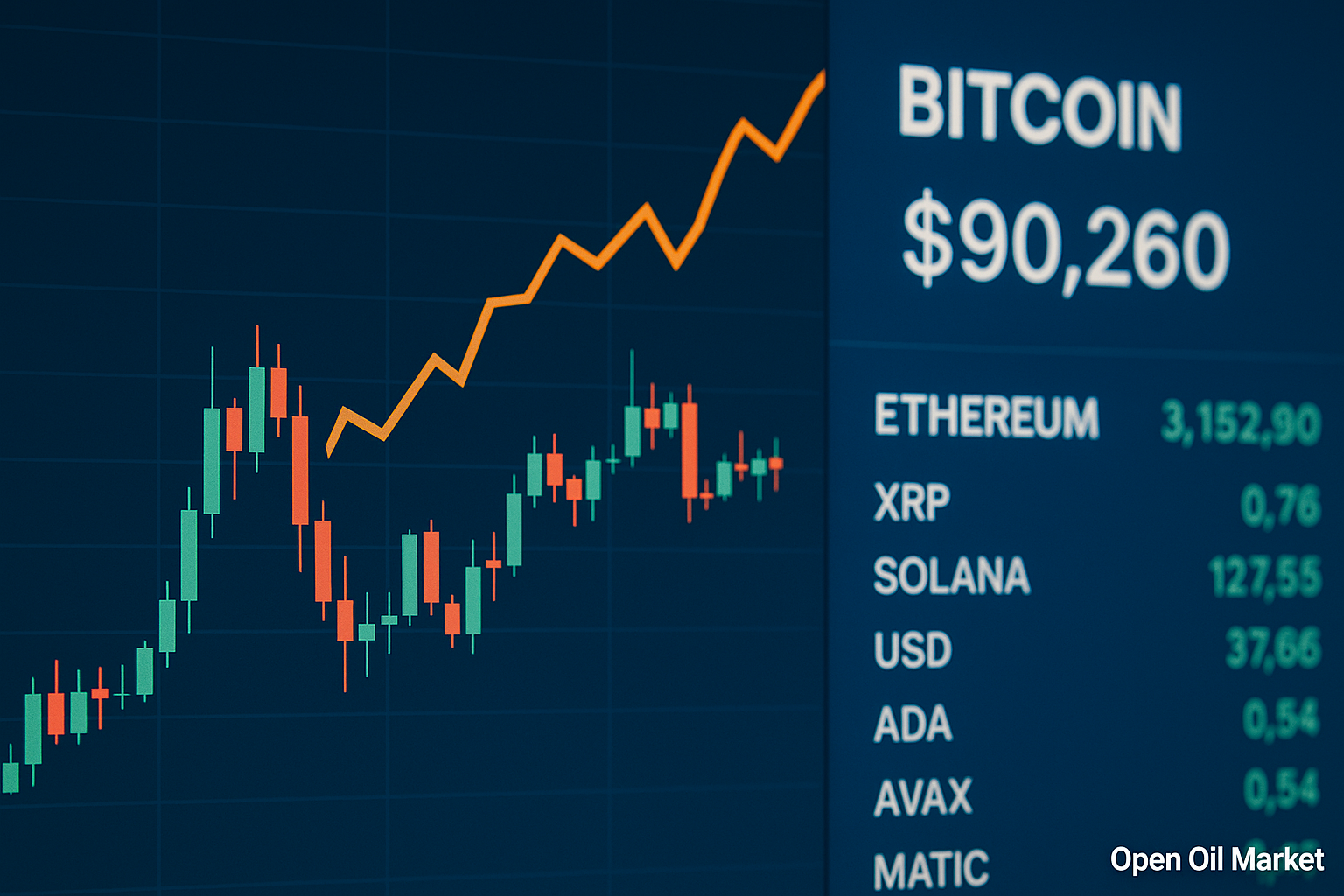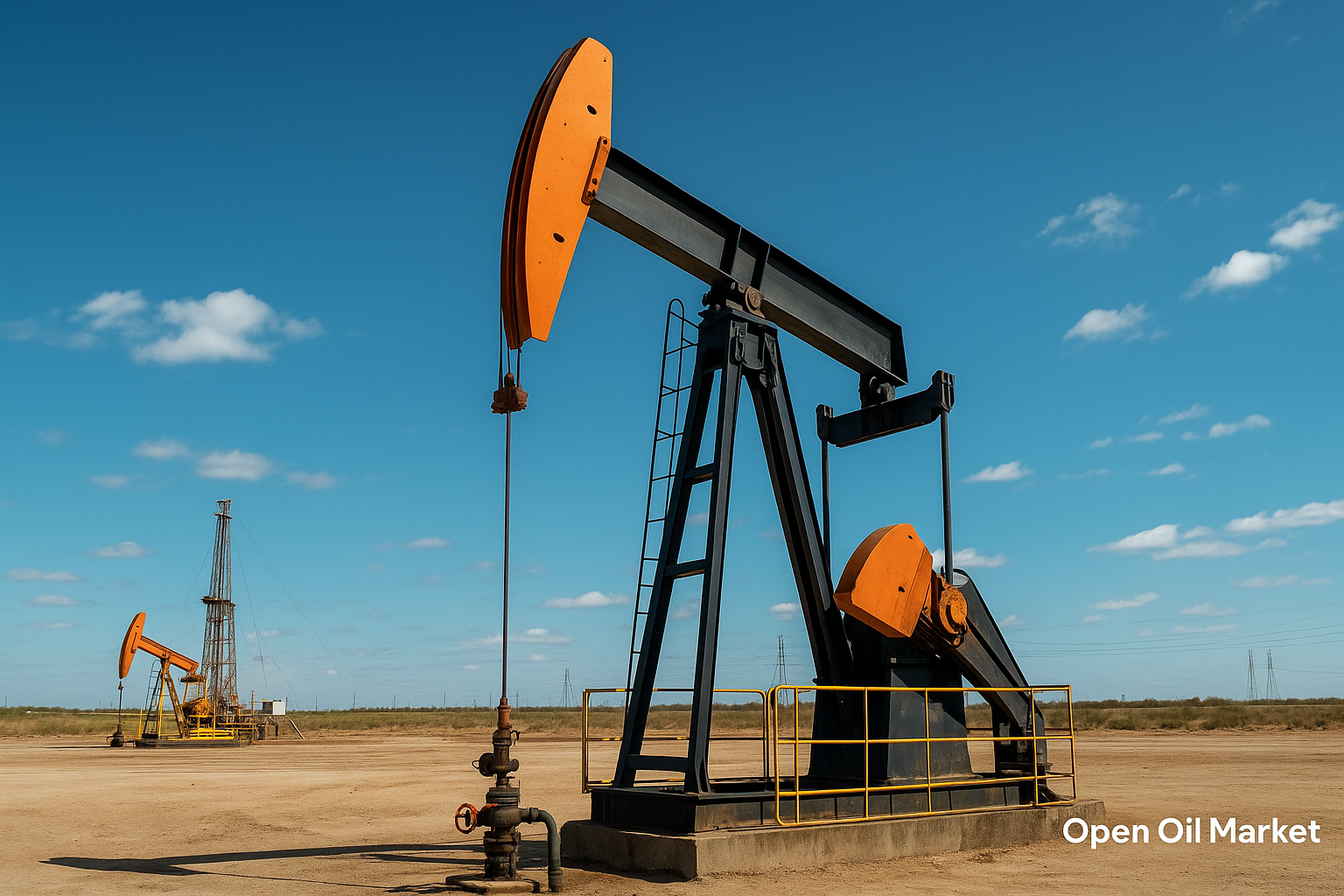
Current News in the Fuel and Energy Sector as of November 7, 2025: Sanction Pressure, OPEC+'s Cautious Strategy, High Gas Reserves, Record Investments in Renewables, and Stabilization of the Russian Fuel Market. Overview of Key Events and Trends in Global Energy for Investors and Market Participants.
As of November 7, 2025, the global fuel and energy sector continues to grapple with intense geopolitical confrontation; however, relative stability in commodity markets is evident. The sanction confrontation between Russia and the West shows no sign of abating: the United States has imposed new restrictions on the largest Russian oil and gas companies (Rosneft, LUKOIL), urging allies to completely wean off Russian energy trade and close any loopholes for exports. The European Union is tightening pressure by eliminating remaining loopholes. Under pressure from the West, India and China are facing calls to reduce purchases of Russian oil; officially, these countries have not confirmed such plans, but the situation adds unease to the market.
At the same time, global commodity markets are demonstrating a relatively calm dynamic. Oil prices, which fell to multi-month lows in October, have returned to a moderate range: Brent is holding around the mid-$60s per barrel. The balance of supply and demand remains fragile—excess supply is suppressing price growth, but concerns about supply disruptions due to sanctions against Russia and a trading "ceasefire" between the U.S. and China are maintaining market support. The European gas market is entering winter with record fuel reserves: underground gas storage in the EU is over 90% full, which has reduced spot gas prices to a comfortable ~€30 per MWh. Overall, the global fuel and energy sector is evolving under the influence of opposing factors: on one hand, a persistent surplus of hydrocarbons remains, while on the other, investments in renewable energy sources and energy efficiency are on the rise.
The global energy transition is gaining momentum: many countries are reporting record launches of solar and wind power plants, and the share of renewables in electricity generation is consistently increasing. At the same time, traditional sector technologies remain crucial for reliable energy supply. In Russia, following a recent fuel crisis, a series of measures is being implemented to stabilize the domestic fuel market. Below is a detailed overview of key segments of the fuel and energy sector, including oil, gas, renewable energy, refining, and the fuel market, as well as the main geopolitical and market trends to date.
Oil Market: Surplus Balance and OPEC+'s Caution
Global oil prices remain under pressure from fundamental factors, despite short-term spikes. After a drop in autumn, Brent prices have stabilized around $64–66 per barrel (below early-year levels). The market continues to anticipate a supply surplus scenario by the end of 2025, supported by the following trends:
- Increasing production amid declining demand. OPEC+ countries are gradually increasing production quotas: in November, the alliance officially approved an increase of about +137,000 barrels per day, with a similar increase planned for December. The U.S. and several other producers (including Brazil and Kazakhstan) have reached record production levels. Simultaneously, global demand growth is slowing: the IEA projects an increase of around +0.7 million barrels per day in 2025 (down from +2 million in 2023), leading to a buildup of oil inventories.
- Trade truce supports demand. An agreement between the U.S. and China on restraint in trade disputes has reduced geopolitical risks and improved forecasts for global demand for commodities. This provides short-term support for oil prices and partially mitigates the negative factors of oversupply.
- Energy efficiency and technology. Active measures for energy conservation and the proliferation of alternative transportation technologies (electric vehicles, biofuels) are gradually limiting the growth of oil product consumption. Structural shifts towards increased energy efficiency are reducing the long-term growth potential for oil demand.
The oil market is balancing between fundamental and political factors. A supply surplus keeps prices at a low level, yet sanction risks and potential market shifts (such as the gradual reduction of Russian oil imports by India) prevent prices from falling significantly below current levels. In the coming months, relatively low oil prices (around $60 per barrel) are expected to persist unless new shocks occur.
Gas Market: Record Reserves and Shift in Flows
The gas market is approaching winter in a favorable condition. European gas storage is filled to a record level (~95%, 5–7% above last year), stabilizing prices in the EU around €30–35 per MWh. The risk of a repeat of last year's gas crisis has significantly decreased—although much will depend on the upcoming winter and the reliability of liquefied natural gas supplies.
- Europe is ready for winter. Unprecedented gas reserves in the EU create a strong buffer in case of severe cold, while demand remains subdued due to a sluggish economy and high electricity generation from renewables. Even during abnormal cold spells, a significant portion of additional consumption can be covered from storage, reducing the risk of fuel shortages.
- Exports to the East. Russia is redirecting gas flows to Asian markets following a sharp reduction in exports to Europe. Supplies through the "Power of Siberia" pipeline to China have reached record volumes (~22 billion cubic meters per year), while the "Power of Siberia 2" project is underway to partially replace the lost European market. At the same time, Europe has increased LNG purchases from alternative suppliers, compensating for the cessation of imports from Russia. Global gas flows have already been realigned: the EU is essentially managing without Russian gas, while Russia has strengthened its presence in Asia. Currently, a combination of moderate demand and high reserves keeps gas prices at a consumer-friendly level.
Thus, the global gas sector enters winter with a solid margin of safety. The unprecedented level of European reserves and supply diversification allows for expectations of stable prices during the heating season, barring any extreme cold or unforeseen circumstances.
Renewable Energy: Record Growth and Integration Challenges
The renewable energy sector continues to grow rapidly, solidifying the path towards a "green" transition. In 2025, a record amount of new solar and wind capacity is expected to be added, bolstered by extensive government support and investment programs in leading economies. However, the rapid development of renewables comes with challenges, as traditional resources remain the backbone of the global energy system.
- Record figures. About 30% of electricity in the world will be produced from renewable sources by 2025—a historic share. In the European Union, clean sources already account for over 45% of generation. Wind and solar generation together surpassed coal power generation for the first time in terms of output (in the first half of 2025), marking an important milestone in the energy transition.
- Infrastructure challenges. High demand for renewable energy equipment has led to rising costs for key components (polysilicon, rare earth metals), while the development of network infrastructure and energy storage systems is lagging behind the commissioning of new capacities. Regulatory uncertainty and market volatility also create risks for investors and slow project implementation.
New technological solutions—from high-capacity batteries to hydrogen energy—are designed to help overcome the growth limitations of renewables. Assuming continued government support and consideration of market risks, "green" energy will continue to increase its contribution to the global energy balance.
Refining and Fuel Market: Recovery Post-Crisis
The petroleum products market remains largely balanced. Globally, refineries are operating at high capacity, meeting autumn demand for gasoline and diesel fuel. A surplus of fuel persists in Europe and Asia, while Russia has fully restored domestic production after the summer crisis of 2025.
- Russian fuel market. In autumn, the Russian government has taken steps to normalize domestic supply: the ban on gasoline exports has been extended until December 31, 2025, diesel exports are limited, and subsidies for refineries are maintained. These measures have allowed for the restoration of gasoline and diesel production to pre-crisis levels, eliminating fuel shortages and reducing wholesale prices. Independent gas stations are once again adequately supplied, and authorities expect to get through winter without interruptions, remaining prepared to intervene if necessary. At the same time, modernization of the industry is planned—developing storage and logistics, digitizing distribution, increasing the depth of oil processing—for long-term market sustainability.
- Fuel prices. Exchange prices for gasoline and diesel fuel are maintained in a moderate range: in Europe, gasoline is trading around $800–820 per ton, and diesel around $780–800 per ton, which is close to the mid-2025 levels. Domestic fuel prices in Russia have stabilized below the peak values of 2022–23 due to the measures taken.
Sanctions and Geopolitics: New Restrictions and Workarounds
Political factors continue to significantly influence the fuel and energy sector. At the end of October, the US and EU imposed another round of sanctions against Russia, targeting the oil and gas sector and related financial structures. This forces market participants to restructure supply chains and seek new suppliers.
- The US and the European Union. The US has imposed sanctions against subsidiaries of Rosneft and LUKOIL (set to be implemented by November 21), and the 19th EU package includes a ban on the purchase of Russian LNG from April 2026 for short-term contracts and from January 2027 for long-term contracts, as well as an expansion of the ban on exporting technology and services for the Russian energy sector. Moscow is responding with countermeasures and diversifying energy exports through friendly countries.
- Market Effect. The risk of new sanctions and geopolitical conflicts remains one of the primary drivers of price volatility. However, these same factors prevent a steep drop in prices, as market participants await assessments of the impacts of the imposed restrictions.




